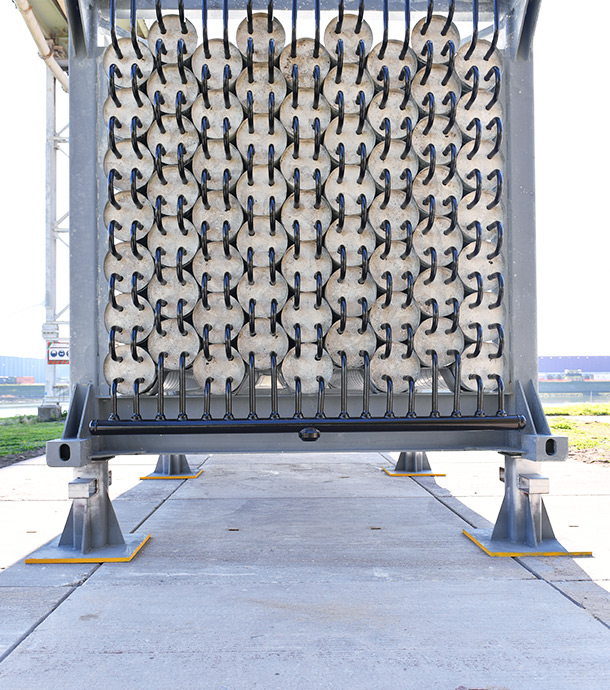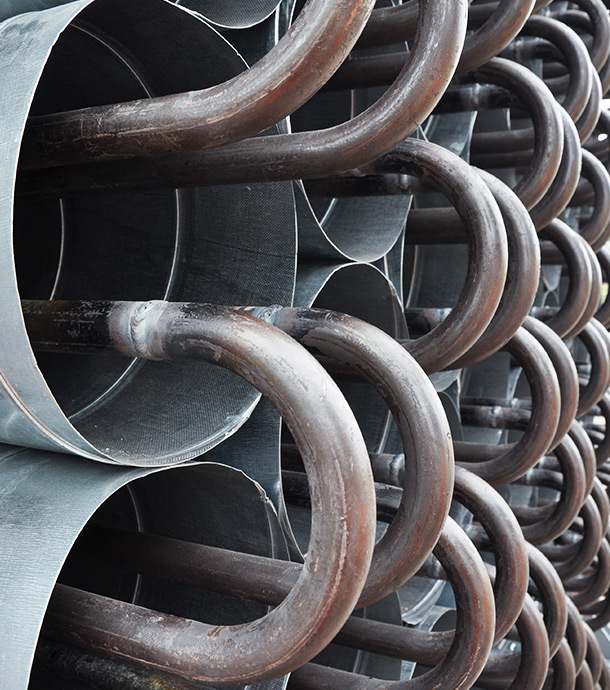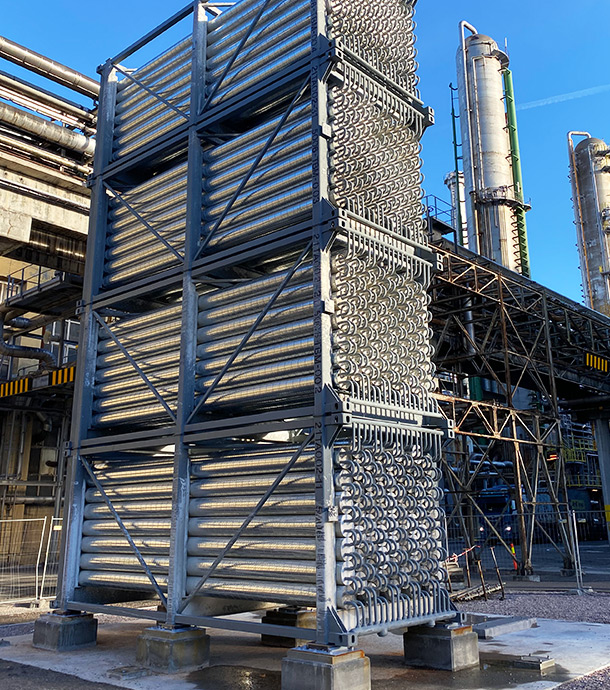

Powering you into the future: Our Thermal Battery™ technology for thermal energy storage
At the core of all of our energy storage solutions is our modular, scalable ThermalBattery™ technology, a solid-state, high temperature thermal energy storage.
Integrating with customer application and individual processes on site, the ThermalBattery™ plugs into stand-alone systems using thermal oil or steam as heat-transfer fluid to charge and discharge green energy on demand.

Standardized
Standardized modular thermal energy storage technology
Our standardized ThermalBatteryTM modules are designed to be handled and shipped as standard 20ft ISO shipping containers. A 20ft module can store up to 1.5 MWh, a 40ft module up to 3 MWh. Depending on customer demand, storage from 5 to >1000MWh can be inputted.

Robust
Thermal energy stored in innovative HEATCRETE®
Thermal energy is stored in our high-performance thermal concrete, HEATCRETE®, at temperatures up to around 400°C. Compared to standard concrete this material has a far higher thermal storage capacity and conductivity, and remains robust under thermal stress.

Customized
Integrated heat exchanger pipes adapted to customer need
The ThermalBatteryTM’s integrated heat exchanger pipes are designed according to process-specific requirements including type of heat transfer fluid (HTF), pressure and temperature. Every battery is customized to meet client need.

Liftetime: up to 30+a
Designed to last
Our ThermalBatteryTM technology is designed to be robust and maintenance-free. It’s constructed entirely of solid-state materials (steel and HEATCRETE®) and has no moving parts – making it an enduring investment for energy transition.
Cost effective
Safe to use
ENERGYNEST modules are designed in adherence to relevant codes and standards and are inherently safe due to their all-welded piping design. They also undergo rigorous testing and certification before delivery to customer sites, and are CE marked.
Take a look at how our ThermalBatteryTM is assembled for our project with YARA.
Easy to install
Rapid carbon payback
The payback from cutting your carbon footprint with ENERGYNEST solutions is remarkably fast – with an estimated time of 2 months based on current calculations.
That means your decarbonization strategy could soon start paying for itself – or generate even more value
Peer-reviewed design
